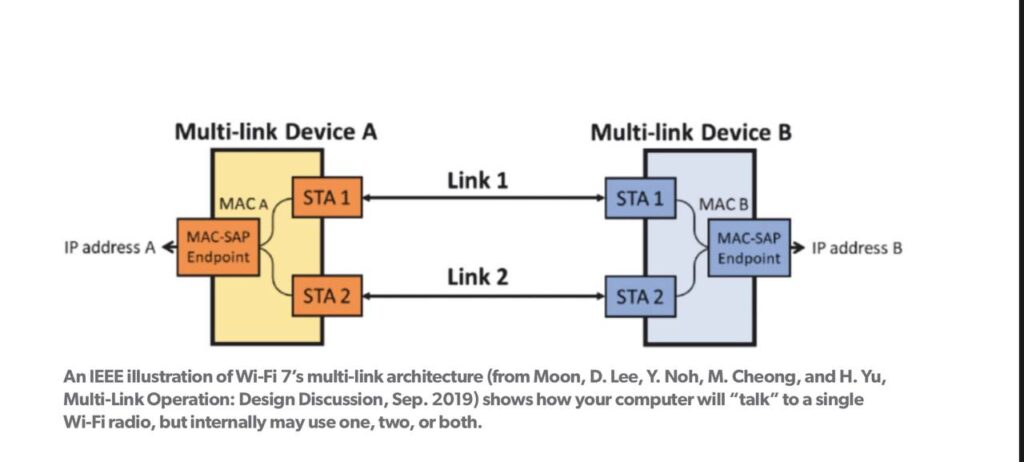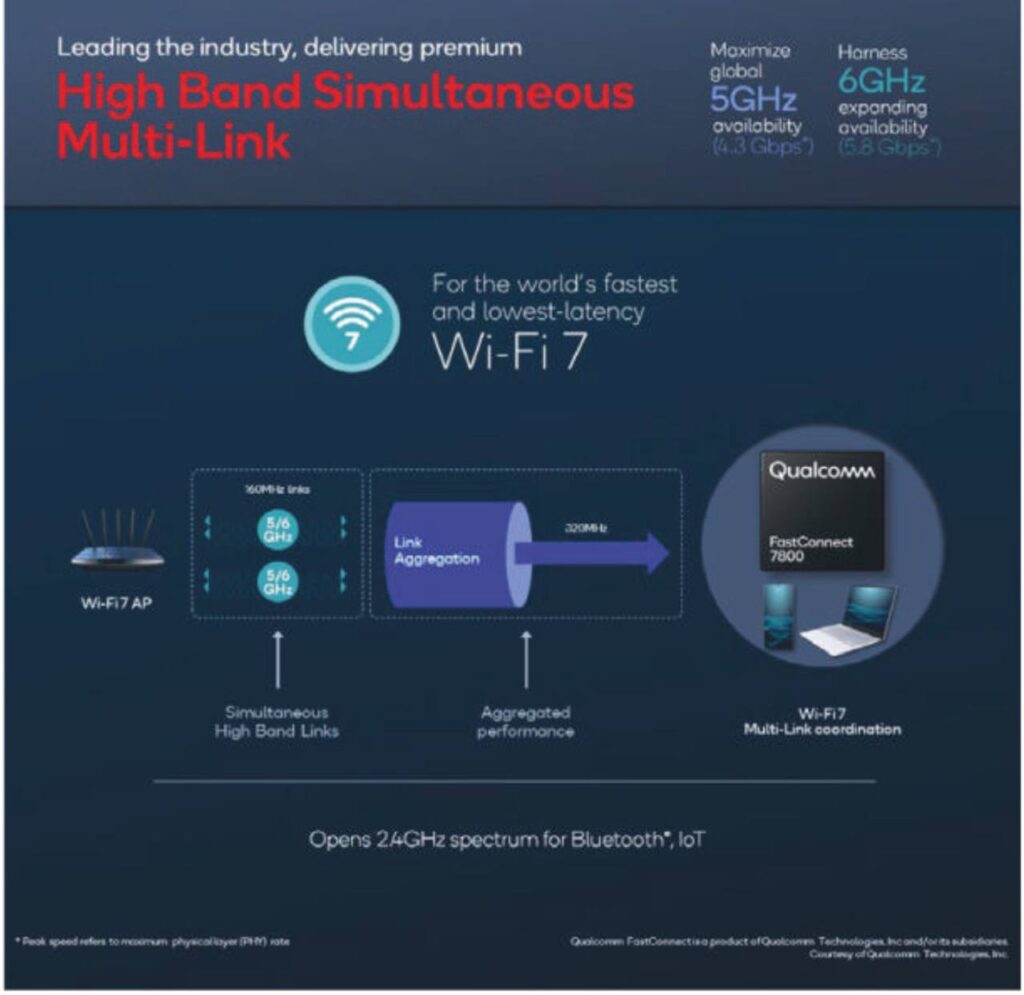wifi 7? What it is | How Fast it is? Revolution for Metaworld
Wi-Fi (Wireless Fidelity), which means the transmission of data through radio waves via a machine that can be fitted inside your home, offices, schools, etc. There are many versions of Wi-Fi in the market, and as of August 2022 Wi-Fi 6E! is the one that is prevalent. This Wi-Fi6E Chip vendors like Qualcomm are making plans for wifi 7, the next generation of Wi-Fi technology. Qualcomm said at Mobile World Congress 2022 that it plans to launch the world’s first wifi 7 chip, the FastConnect 7800, as part of its new premium Snapdragon Connect specification by the end of 2022.
The wifi 7 specification, also known as 802.11be isn’t even close to being completed- the IEEE’s current paper on the current status of 802.11be calls for the standard’s ratification sometime in 2024. But as with previous Wi-Fi standards, that isn’t stopping vendors from developing silicon-based upon draft releases, tweaking them via firmware or other updates as the specification moves through its final approval process.
Yes, wifi 7 will be faster, in part because of wider channel widths. But the key improvement wifi 7 makes is how it smartly uses what earlier Wi-Fi versions have already provided it.
What is wifi 7? The Short Answer
wifi 7 will significantly increase Wi-Fi bandwidth. How much? According to the IEEE, the maximum nominal throughput (speed) of wifi 7 is 46Gbit/sec, 4.8 times faster than Wi-Fi6 and slightly faster than the 40Gbits/sec throughput delivered by Thunderbolt 3/4 connection.
In the real world, though, the numbers will be lower. According to Mike Roberts, the global vice president for product marketing at Qualcomm, the FastConnect 7800 will reach real-world throughput speeds of 5.8 gigabits per second, 60 percent more than the previous (Wi-Fi 6E) generation. The average latency will be less than 2 milliseconds, or 60 percent faster than the previous generation, he said. Mediatek demonstrated wifi 7 in action and claims that it’s 2.4 times faster than Wi-Fi6
wifi 7: Faster, Smarter, and with far less lag
Wi-Fi6 was optimized for congestion and wireless efficiency, enabling your router to effectively communicate with dozens of wireless devices. Wi-Fi6E weaved in a dedicated 6-GHz frequency, adding channels for high-bandwidth devices such as mesh routers to communicate with one another. If you think of wireless communication as lanes on a freeway, Wi-Fi 6E effectively added a dedicated HOV or commuter lane, giving high-priority buses and ambulances their own traffic-free channel.
In the real world, though, cars moving down a freeway can reroute themselves to avoid congestion. Until now, Wi-Fi couldn’t. A Wi-Fi 6 router can communicate data on both the 2.4-GHz, 5-GHz, and 6-GHz channels simultaneously, but they’re all independent of one another.
wifi 7 most significant improvement is that it transforms the router into a multi-link device. Several physical radios can communicate on separate frequencies, yet Wi-Fi7 ties them all together underneath a single MAC interface so that an Xbox or a smart speaker sees a single device. A Wi-Fi7 router can simply assign data packets to whatever frequency channel is the least congested, because it simply doesn’t care which frequency it uses.

Put another way, the days of manually configuring a device to be “on” a 2.4-GHz or 5-GHz network appear to be over. wifi 7 will choose which frequency band has the lowest congestion and send the data over that channel. Qualcomm calls this Alternating Multi-Link, where devices simply switch back and forth between available bands. Bouncing back and forth between channels also has implications for power saving, according to IEEE.
In a case where the wifi 7 router is only “talking” to another device, there’s another option that Qualcomm call “High Band Simultaneous Multi-Link.” With it, all bands are used simultaneously to blast data across all available radio frequencies. That means what it says. wifi 7 devices won’t necessarily communicate on, say, a 6-GHz channel—they’ll be able to theoretically communicate on all three at once. (Practically, that won’t happen; the 2.4-GHz band will continue to be reserved for slower IoT devices. In the Qualcomm FastConnect 7800, HBS Multi-link combines four streams across the two 5-and 6-GHz radios)

In part, this takes advantage of an additional feature: wifi 7 wide-channel spectrum use. According to Qualcomm, wifi 7 widens the maximum available channel width from 160-MHz to 320-MHz….a wider channel band equals more available throughput.
The kicker, however, is that the 320-MHz channel isn’t always available. Instead, wifi 7 can combine two 160-MHz channels in the high(5-6-GHz) bands to create an effective 320-GHz data channel. wifi 7 can then use these channels as it chooses, such as using one radio for communicating to a device and another for receiving data. wifi 7 also incorporates “preamble puncturing” which is a more aggressive way of handling interference. If a wifi 7 router is trying to connect to a channel that’s partially interfered with, the router doesn’t give up. Instead, it simply grabs the channel bandwidth that’s not being interfered with. The upshot is that wifi 7 will more efficiently use data.
There’s one big additional benefit. A wifi 7 router that can intelligently pick channels also significantly reduces wireless latency or lag. That will be perfect for gaming or for AR/VR ambitions, which demand latency-free video to prevent vertigo. We don’t know how this will play out, but in a world moving to cloud gaming, Metaverse, and VR, reduced latency may be the most significant addition of all.



